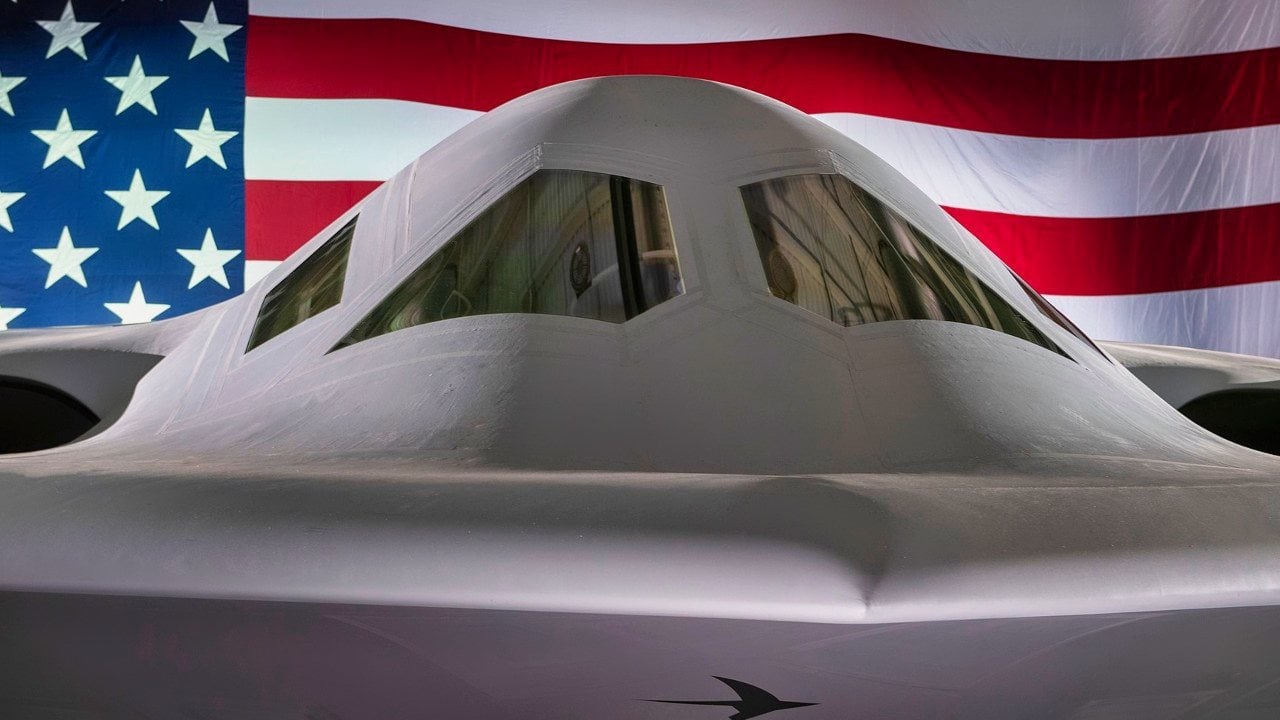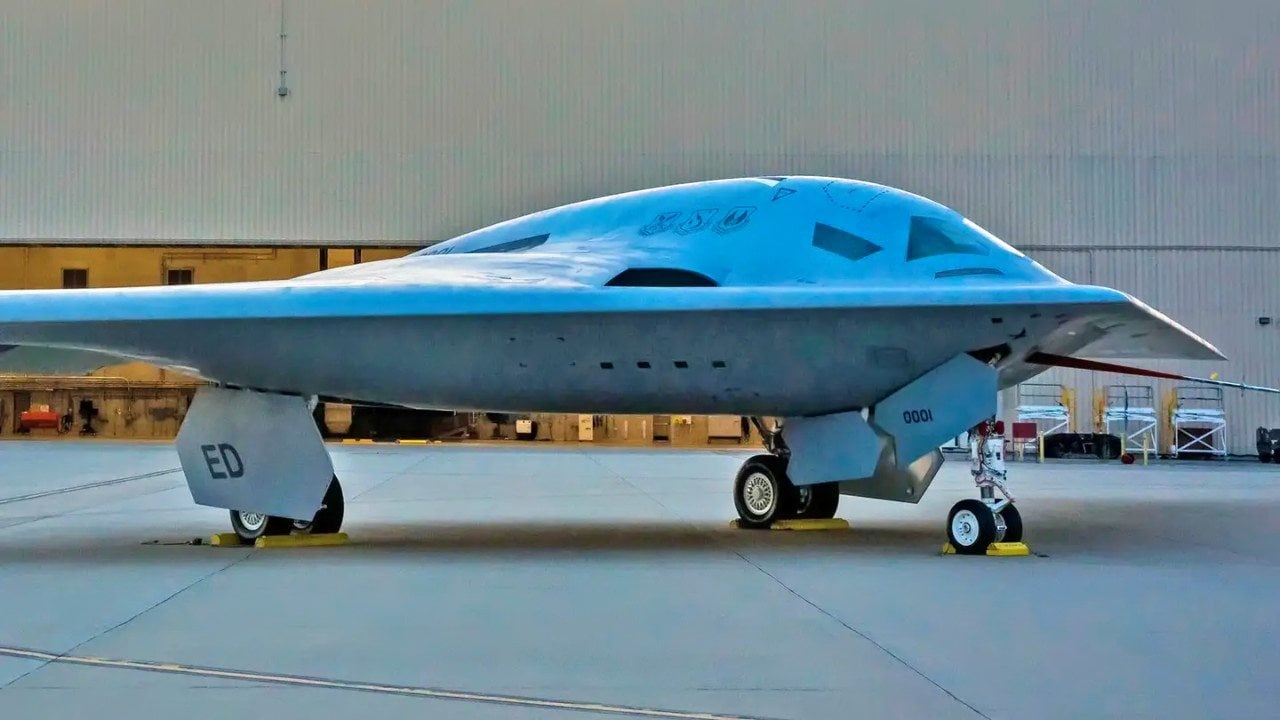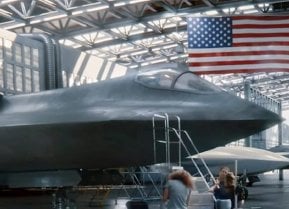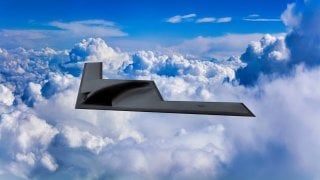The B-21 Raider Has One Problem the Air Force Can't Easily Fix
The U.S. Air Force faces a significant challenge in developing the B-21 Raider, a new long-range stealth bomber designed to penetrate contested airspace.
Summary and Key Points: The U.S. Air Force faces a significant challenge in developing the B-21 Raider, a new long-range stealth bomber designed to penetrate contested airspace.

-Despite the bomber's advanced capabilities, the Air Force needs at least 300 units for effective deployment but will likely only receive 100 over the next decade.
-Given budget constraints and the evolving nature of warfare, the Air Force should complement the B-21 with next-generation drones and invest in hypersonic weapons systems.
-The B-21 remains a critical investment for maintaining U.S. air superiority.
The Air Force's B-21 Raider: Advanced Stealth Bomber with a Math Problem
The United States Air Force is in a real pickle. It’s not the only part of the US government that is facing significant problems. In fact, the whole country is about to be riven by a catastrophic debt crisis, now that America’s enemies (and friends, such as Saudi Arabia) have killed the petrodollar and begun the movement to remove the US dollar as the primary reserve currency in the world.
It’s probable that the Pentagon doesn’t even realize how cooked its budgets are.
Even without the pending debt crisis and subsequent financial reordering heading our way, though, the military has been struggling to deliver systems as promised—despite paying top dollar for these systems.
One of the biggest problems facing the Air Force (and the other branches in their own way) is how to develop a platform that can reliably penetrate contested airspace belonging to a near-peer rival, such as China or Russia, without being shot down outright?
Enter the Air Force’s newest long-range stealth bomber, the B-21 Raider. This bird has it all. It incorporates the most advanced version of stealth. Unlike previous stealth planes, this has an entirely upgraded composite skin, making it even harder to identify on radar.
These planes move fast for a bomber. What’s more, they can deliver an assortment of lethal payloads over distant, otherwise well-defended targets.
The B-21 Raider Has a Math Problem
There’s just a tiny problem: the Air Force needs at least 300 of these birds in the next couple of years for it to be worth the massive investment. At best, the Pentagon will receive 100 of these warbirds over the next decade. And even then, many are understandably inquiring about whether investing this system is the most efficient use of America’s limited (and soon to be dwindling) resources.
After all, as I have argued repeatedly, we are now in the age of rampant drone warfare that undermines most concepts of warfare that so many of our leaders hold dear.
Still, the Air Force needs a deep strike bomber capacity. It has already made the investment into these platforms. But if it is not going to get the required 300 units for this to be an effective investment, the Air Force should spend considerably smaller sums of money building next-generation drones to operate in tandem with the B-21.
What’s more, the Air Force (along with the Army and the rest of the force) must pool their limited resources to both build offensive hypersonic weapons systems as well as viable defenses against enemy hypersonic weapons.
The idea, though, that the B-21 is a waste of time or money is ridiculous. It is without a doubt the most advanced bomber in the world. If the Americans committed to building at least 300 of these units as quickly as possible, the rest of the world would be put on notice.
Failing that, augmenting the handful of B-21s that are being built with advanced drones will allow for the B-21 to not only penetrate the sophisticated air defenses of enemy airspace but it would also ensure mission success.

As well as mission survival.
Time is running out for all of these issues, though. Soon, a shooting war either with China or Russia will be upon us. Their advanced anti-access/area-denial (A2/AD) and other air defense systems will deny most of the Air Force’s fleet reliable access to contested regions.
It will, therefore, fall upon stealth systems (which even then will find it difficult to operate). But the most advanced stealth technology as found in the B-21 will be instrumental in overcoming the threats posed to US power projection platforms.
The B-21 is a worthy investment. Now pair it with next-generation drones and listen to our enemies cry.
Author Experience and Expertise: Brandon J. Weichert
Brandon J. Weichert, a National Interest national security analyst, is a former Congressional staffer and geopolitical analyst who is a contributor at The Washington Times, the Asia Times, and The-Pipeline. He is the author of Winning Space: How America Remains a Superpower, Biohacked: China’s Race to Control Life, and The Shadow War: Iran’s Quest for Supremacy. His next book, A Disaster of Our Own Making: How the West Lost Ukraine, is due October 22 from Encounter Books. Weichert can be followed via Twitter @WeTheBrandon.
All images are Creative Commons or Shutterstock.
From the Vault
Russia Freaked Out: Why the U.S. Navy 'Unretired' the Iowa-Class Battleships
Battleship vs. Battlecruiser: Iowa-Class vs. Russia's Kirov-Class (Who Wins?)


